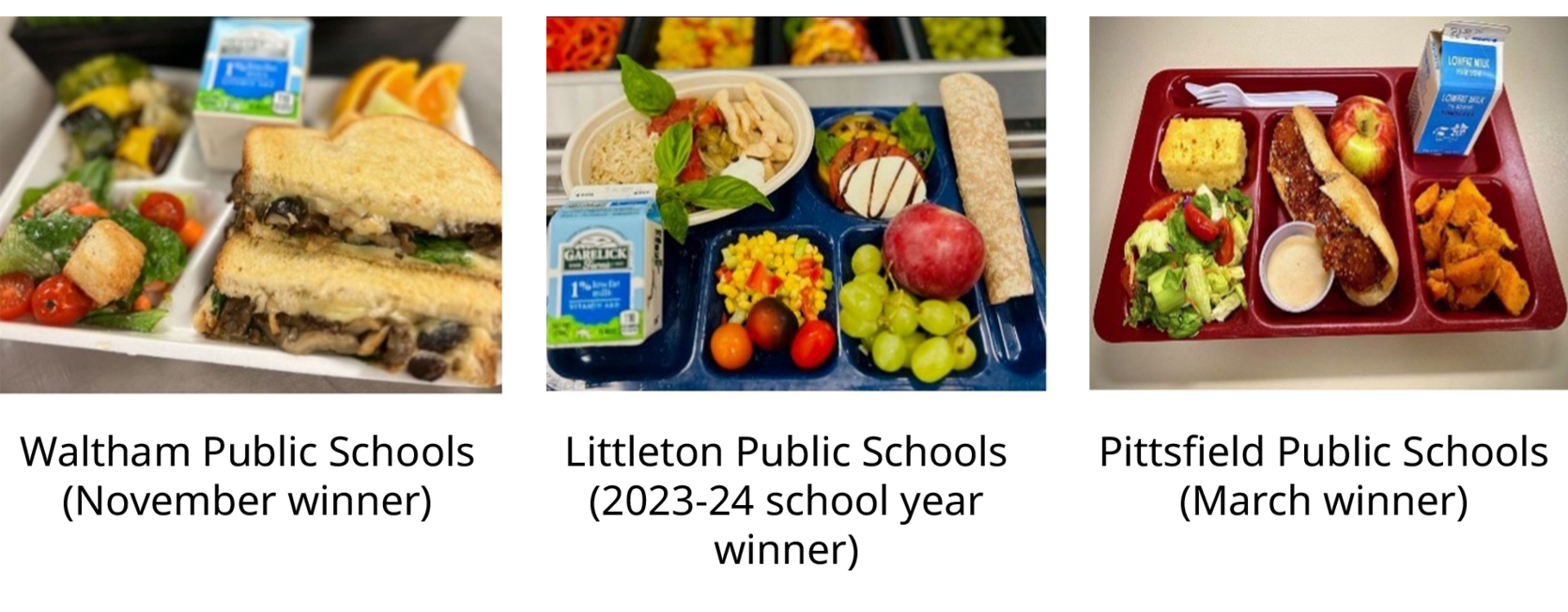Press Release: 2024-07-03
Healey-Driscoll Administration Highlights First Year Successes of State-funded Universal Free School Meals
21 million more meals served; thousands more students participating, many eating locally sourced food
FOR IMMEDIATE RELEASE:
7/01/2024
MEDIA CONTACT
Karissa Hand, Press Secretary
Phone
Call Karissa Hand, Press Secretary at 617-725-4025

EVERETT — The Healey-Driscoll Administration today released data from the first year of state-funded universal free school meals, showing major increases in student participation compared to before the COVID-19 pandemic. This comes at a time when recent data analysis from the U.S. Department of Agriculture found that state universal free school meal policies reduced food insufficiency among children.
The 2022-23 school year was the first for state-supported universal free school meals, and compared to the 2018-19 school year:
- 12.2 million more lunches were served
- 61,500 more students ate lunch every school day
- 9 million more breakfasts were served
- 43,400 more students ate breakfast every school day
“Almost 7 out of 10 Massachusetts students are eating school lunch, which means over half a million students are getting nutritious meals,” said Governor Maura Healey. “We were proud to make universal free school meals permanent with the Legislature, and the combination of state and federal funding means that breakfasts and lunches are available to all students to help them stay healthy and succeed in school.”
“In addition to benefiting students and families, the state’s investment in universal free school meals has also been an investment in school nutrition programs,” said Lieutenant Governor Kim Driscoll. “With more predictable revenue, schools and districts have been able to invest in locally sourced food and have produced impressive menu options.”
Universal free school meals have provided districts with a more stable and dedicated nutrition funding stream. Districts can use that funding to invest in meal quality, including offering more locally sourced options. Some of this year’s school cafeteria offerings were featured in the Terrific Tray competition, a contest run by the Department of Elementary and Secondary Education in partnership with Massachusetts Farm to School. Each month, schools submitted a photo and description of their best tray, and a winner was chosen. At the end of the school year, the public voted on the winning tray. This year’s winner was Littleton Public Schools for their chicken fajita bowl; mozzarella cheese, balsamic, and tomato stack with produce from a farm in Sharon; a corn salad with cherry tomatoes from a farm in Acton; and apples from an orchard in Groton.
“We’re proud to be at the forefront as Massachusetts leads the way in using state funds to support our students’ food security, health and wellbeing, especially due to leadership from Governor Healey and the state legislature. This data shows what we know to be true – universal free school meals increase participation and reduce food insecurity,” said Education Secretary Patrick A. Tutwiler. “That stability is good for students and schools alike, and schools have produced some beautiful meals!”
“Students’ basic needs must be met in order for students to excel at grade level or beyond, and supports like universal free school meals build the foundation for that work,” said Russell D. Johnston, acting commissioner of elementary and secondary education. “It’s great to see school meals using local ingredients, and I’m happy to highlight the important work of school nutrition staff.”
The 2022-23 school year was the first year of state-supported universal free school meals, and with Governor Healey’s signing of the Fiscal Year 2024 budget, Massachusetts became the eighth state to make universal free school meals permanent.
Total meals served and participation from the first year of universal free school meals in Massachusetts (2022-23):
- 97.5 million total lunches served,
- 557,000 students ate lunch every school day,
- 44.5 million total breakfasts served, and
- 243,000 students ate breakfast every school day.